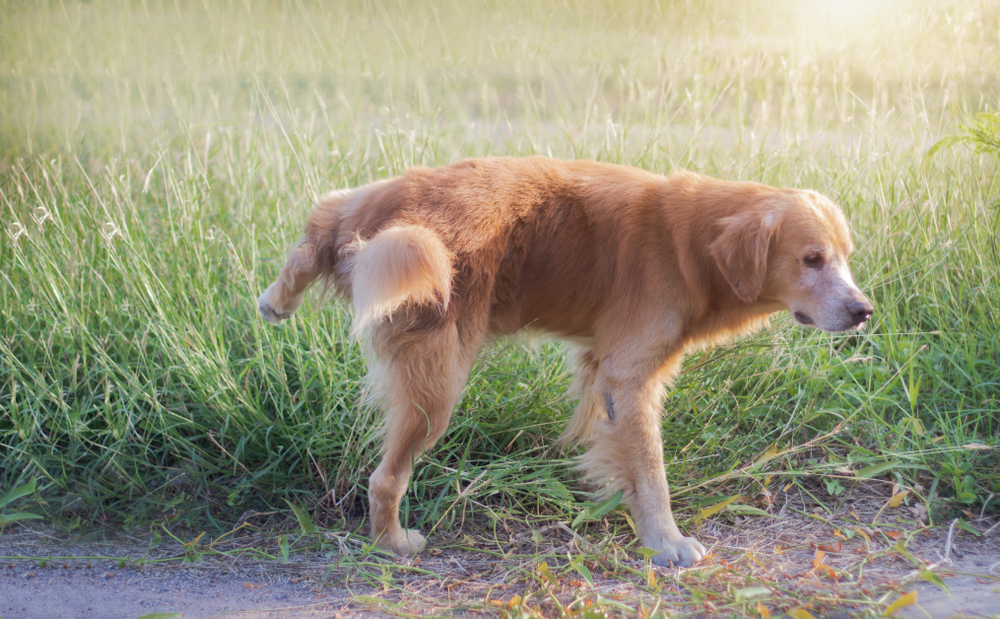Bladder stones, also known as cystic calculi or uroliths, are concentrated formations of minerals that collect in a dog’s bladder. The minerals are found in the urine and at high enough concentrations can “precipitate” to form crystals which can then form larger stones that in turn can irritate the bladder, cause infection, or lead to urinary blockage.
Ranging in size and composition, from sand-like grains to larger “stones,” this condition can be extremely painful and even life-threatening if a urinary blockage occurs.
When bladder stones become lodged at the opening where urine flows from the bladder into the urethra, dogs are left straining or even unable to urinate. This obstruction should be considered a medical emergency. (Left untreated, your dog could collapse or suffer kidney failure.) By taking immediate action, however, bladder stones are highly treatable.
What causes bladder stones in dogs?
Canine bladder stones can have an array of causes including genetic predisposition, metabolic abnormalities (such as liver disease), and — as is the case in a very common urolith in dogs —urinary tract infections.
There are five types of bladder stones: calcium oxalate, urate, cystine, silica (the least common), and struvite (the most common). It can take months for a large stone to develop, but smaller stones can build up in just a few weeks. Each type has distinct causes:
- Struvite bladder stones are formed by a concentration of minerals in your dog’s urine. These minerals stick together and form (painful) crystals, and occur more commonly in female dogs. In dogs, these stones almost always occur as a consequence of a urinary tract infection. “Sterile” struvite does occur, but is rare.
- Calcium oxalate stones are composed of calcium, oxalates, and citrates, and tend to form as a result of genetic factors, as well as high dietary calcium. These occur more often in male dogs. Small terriers and toy breeds, such as Shih Tzus, Bichon Frises, and Yorkshire Terriers, may be more prone to this type of stone.
- Urate stones can result from liver disease, genetic abnormalities, or issues with uric acid metabolism.
- Cystine stones predominantly affect male dogs, and certain breeds are genetically predisposed to getting them. These stones occur when your dog’s kidneys can’t absorb cystine.
- Silica stones are rare, affecting only a small percentage of dogs. These stones are often linked to the consumption of certain dietary ingredients, or even water in certain areas.
Depending on the type of stone (and the size), your dog’s vet will figure out the best course of treatment, such as antibiotics, changing your dog’s diet, or surgery.
What are the signs of bladder stones in dogs?
Some dogs may not show any obvious clinical signs of bladder stones, while other dogs may pass small stones on their own, imperceptibly, through the urinary tract. (Because female dogs have a wider and shorter urethra, they tend to pass stones more easily than males.)
Symptoms may include:
- Straining to urinate
- Blood in the urine
- Whimpering while urinating
- Vomiting or change in appetite
- Urinating small amounts, frequently
- Inability to urinate (a medical emergency, as it may indicate blockage of the urethra, resulting in a bladder rupture)
Can canine bladder stones be prevented?
Although there are different causes for bladder stones, you can take some steps that may help prevent them.
Giving your dog a healthy, nutritionally balanced diet won’t necessarily stop certain kinds of stones from forming, or get rid of them, but a good diet can help promote the right pH balance in your dog’s urine. (It’s critical to make sure that the pH level is neither too low nor too high.) Your vet can conduct a urinalysis test to check whether the urine is well balanced between acid and alkaline, and what dietary steps you might consider to minimize the buildup of bladder stones.
Keeping your dog hydrated and urinating normally is a key element to help reduce the odds that they get crystals or stones. Always give your dog access to fresh water; rinse out the bowl daily and wipe it down to remove any food debris that may have collected in the water. If you’re concerned that your dog isn’t drinking enough water, talk with your vet.
A diet of fresh food, which contains more natural moisture than dry food, can also support good hydration.
The Farmer’s Dog fresh food is tested for Relative supersaturation (RSS), considered the gold standard for risk assessment of crystal formation (struvite and oxalate) in urine for dogs. If your dog has urinary tract issues, speak to your vet, and have them check out our vet professionals portal for more information and supporting studies.
How are canine bladder stones treated?
How your dog will be treated for bladder stones depends on the type and size of stone and whether the condition is moderate or an emergency. Your vet can make an assessment and determine the best course of action. If your dog is showing signs of abdominal pain, an ultrasound test may be necessary because certain bladder stones don’t show up on X-rays.
For struvite stones, vets will typically recommend a course of antibiotics to treat any underlying bacterial infection, and they may also prescribe a special therapeutic diet to help dissolve the stones. This is the preferred options, but it takes time, it won’t prove effective for every type of bladder stone, and (let’s face it) some picky eaters may not like the new diet and resist it.
With certain stones, surgery may become the best option. The good news is that the stones are removed immediately, giving your dog some relief. But of course there are always certain risks with surgical procedures, such as complications from anesthesia and potential infections. Post-surgery, there may also be follow-up visits, medication, and perhaps a change in diet for your dog.
If the stones are small enough, your dog’s vet may recommend urohydropropulsion, which uses a liquid solution in the bladder to expel the stones. This procedure will only work if the stones are small enough, and it typically requires general anesthesia, along with a temporary urinary catheter, which can increase the risk of infection in an already irritated urinary tract.
Laser lithotripsy can be a good alternative to open surgery if the bladder stones are smaller. It’s extremely effective at breaking up stones into smaller particles to help them pass, yet it is also a costly procedure and may require an overnight stay for observation of your dog.
Although it isn’t always possible to prevent bladder stones, monitoring your dog carefully is the best defense. Along with choosing the right diet for your dog and ensuring access to fresh water daily, be sure to keep up with annual checkups that include bloodwork and urine screenings to look for things like early signs of urinary stones.










